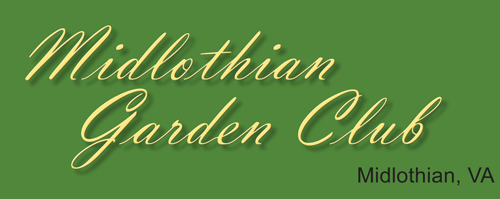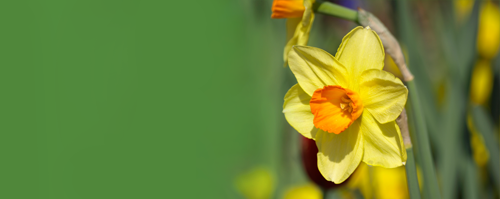HORTICULTURE
Horticulture is the part of Garden Club that gives members a chance to bring in and show examples of the plants they have grown in their gardens or home. The following gives members some guide lines and tips for choosing and displaying their specimens.
Selecting Specimens
• Take a container of tepid water with you in the garden.
• Use sharp clean garden shears, scissor, or knife to cut you specimens.
• Specimens are best cut in the early morning or after 4 pm in the afternoon.
• Look for best specimens that are typical for the plant to be exhibited.
• Select blooms approximately ½ - ¾ open. Avoid visible center, curling petals, or faded color. |
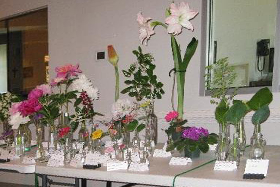 |
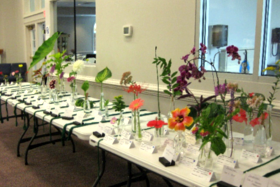 |
Conditioning
• Once inside move your selections to a clean container with fresh clean lukewarm water.
• A floral preservative can be used.
• Do not crowd your selections in the containers.
• Re-cut stems with a clean knife, scissor, or garden shears. Cut underwater to assure best absorption.
• Stem can be cut straight across or at a diagonal.
• Place containers with plant material in a cool, dark area for 12-24 hours.
• Specimens with milky sap may need to have the stem dipped into boiling water or use candle flame to seal the cut. Poinsettias, amaryllis, narcissus, calla lily are examples.
• Change cloudy water before exhibiting. |
Grooming
• Do not do any grooming until specimens have been conditioned.
• Grooming tools include small pointed scissors or garden shears, manicure scissors, tweezers, cotton balls, Q tips and small soft brushes such as a soft artist paint brush or cosmetic brushes.
• Use a Q tip or cotton ball to remove water spots on leaves.
• Use sharp clean scissors to remove any damaged leaves or petals.
• Also remove insects, seed pods and diseased areas.
• Do not use any leaf polish. Plant material must be in its Natural State and unaltered in any way. |
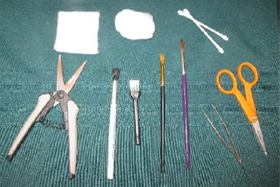 |
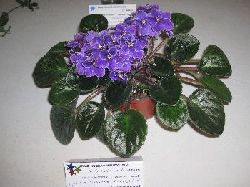 |
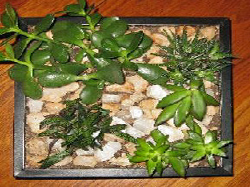 |
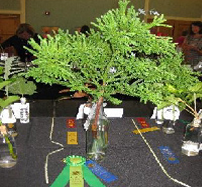 |
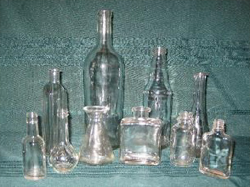 |
Exhibiting
• All exhibits must be FRESH plant material and must have been grown by the exhibitor.
• Container grown plants must have been in the exhibitor’s possession at least 90 days, except for multiple plants which is six weeks.
• Containers must be of clear glass with no designs or ornamentation.
• The container should be in proportion to the plant material; small for small specimens and large and heavy enough for a large branch. The specimen should be 1½ to 2 times the height of the container.
• Before placing your specimen in the container be sure to thoroughly clean it with hot water and bleach to prevent bacteria growth.
• There can be no leaves or foliage under the water.
• The specimen should not touch the bottom of the container.
• Wedging material can be used to hold the specimen in place and upright.
• Wedging material consists of cotton, saran wrap, bubble wrap, or cork. |
Entry Tag
• Each horticulture specimen is entered with an entry tag.
• The entry tag is used to properly identify the exhibit and educate fellow members.
• The Division, Section, and Class can be found in the member’s club handbook or the Flower Show Schedule.
• The tag will also give the specimen’s scientific or binomial name.
• The first term represents the genus and is always capitalized.
• The second term represents the species and is all lower case letters.
• If handwritten they both are underlined. If typed they are italicized.
• The variety/cultivar is what a person buys, when they buy a named plant. Cultivar names are always capitalized and enclosed in ‘single quote’.
• The common name is the name people use every day when talking about their plants.
Each flower has other requirements to have the perfect horticulture exhibit. An excellent resource is the book, Horticulture, Exhibiting and Judging, published by the National Garden Club. A copy can be purchased from their web site, www.gardenclub.org. |
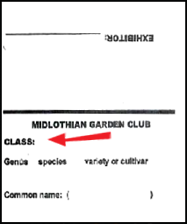 |
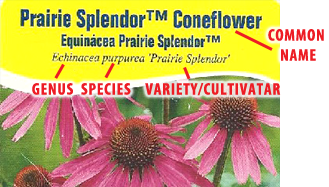 |
|
|
